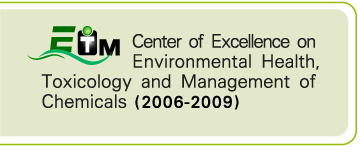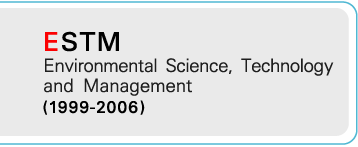การใช้เอนไซม์แลคเคสในการย่อยสลายสารพิษและสีย้อมจากโรงงานอุตสาหกรรม
ดร.สุวิทย์ ล้อประเสริฐ สถาบันวิจัยจุฬาภรณ์ การศึกษาเริ่มจากการนำดินจากแหล่งโรงงานที่ผลิตสี 5 แห่ง คือ บริษัท ทีโอเอ เพ้นท์ (ประเทศไทย)จำกัด บริษัท 3ชัยพิมพ์ผ้า บริษัทไทยโอเชี่ยนอุตสาหกรรม จำกัด บริษัทไทยเกรทโปรดักส์ จำกัด และโรงงานฟอกหนัง จ.สมุทรปราการ มาทดลองค้นหาเชื้อที่มีความสามารถและคุณสมบัติที่ต้องการ พบเชื้อแบคทีเรียที่สามารถผลิตเอนไซม์แลคเคสได้ในปริมาณสูง ตั้งชื่อว่า M4 แลคเคสที่ผลิตจากแบคทีเรีย M4 สามารถออกซิไดส์ guaiacol เป็น o-quinone ซึ่งมีสีน้ำตาล แบคทีเรีย M4 มีลักษณะเป็นเชื้อแกรมลบแบบท่อน โคโลนีที่โตบนอาหารแข็ง LA ที่ 37°C เป็นเวลา 18 ชั่วโมง มีสีเหลือง ขอบโคโลนีหยัก แห้ง เมื่อทำการเปรียบเทียบยีน 16S rRNA ขนาด 1,426 bp ของแบคทีเรียชนิด M4 กับฐานข้อมูลใน GenBank พบว่า แบคทีเรียชนิดนี้มีความคล้ายคลึงกับ… (read more)
 Center of Excellence on Environmental Health and Toxicology (EHT)
Center of Excellence on Environmental Health and Toxicology (EHT)










